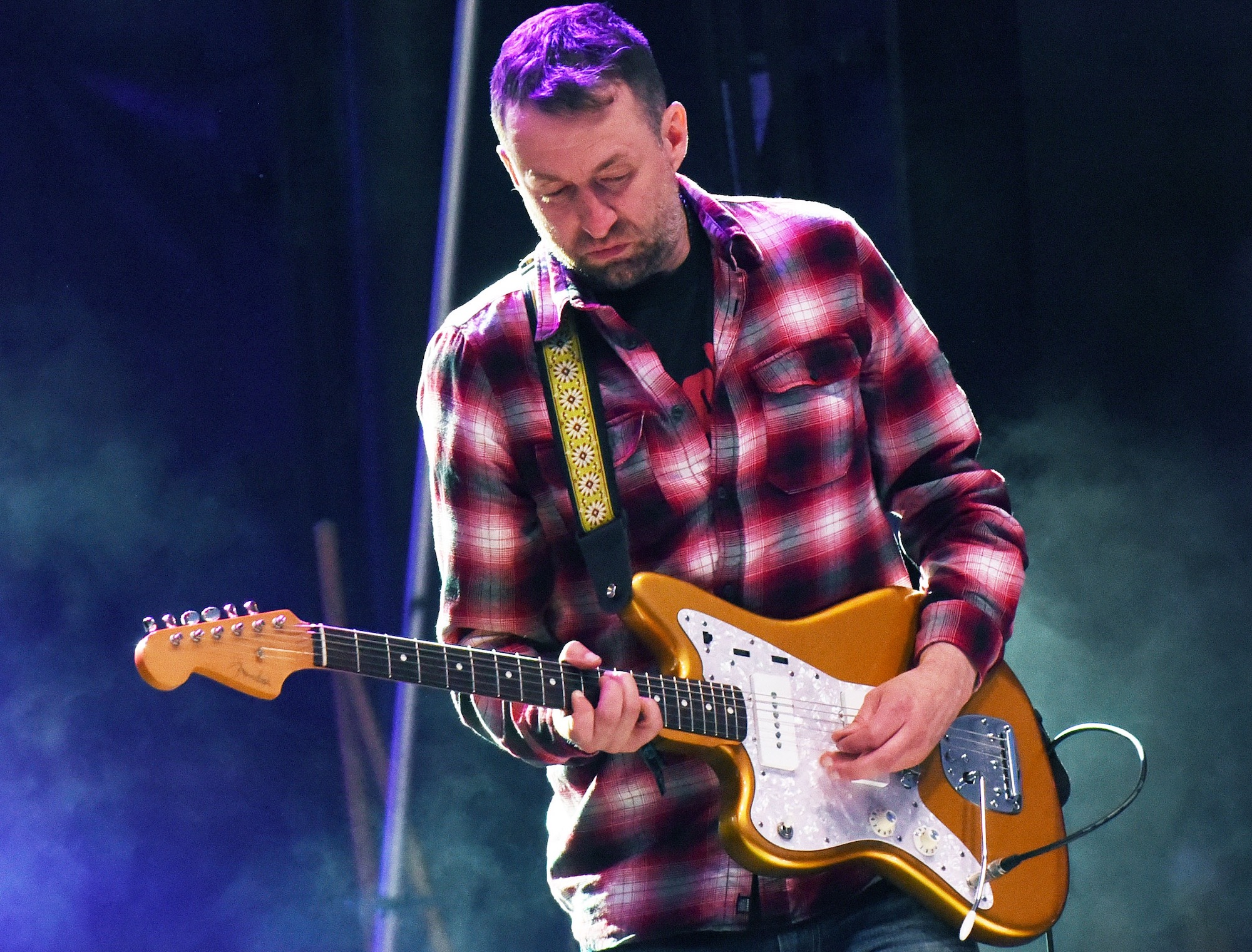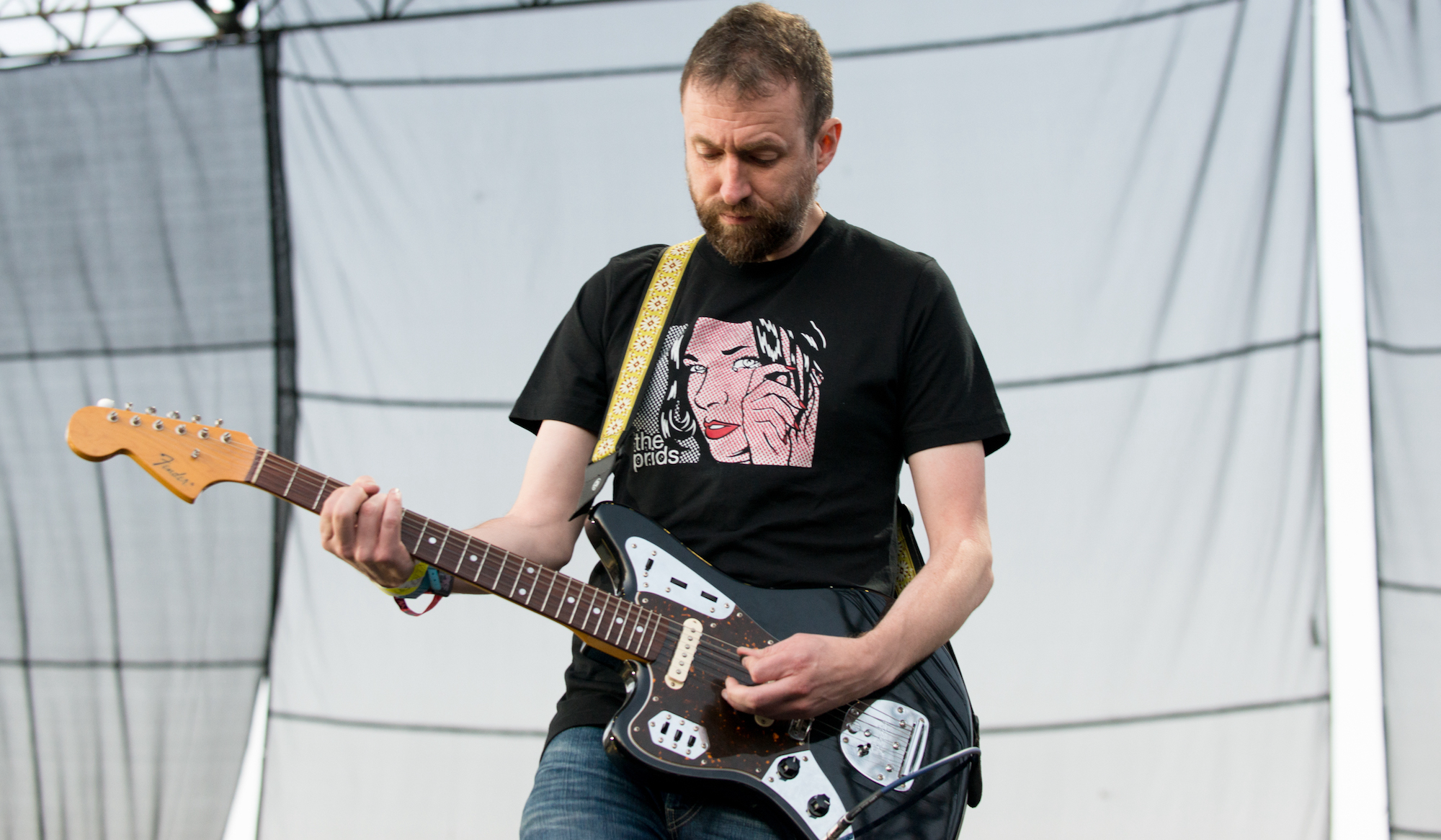“I wanted to play like Johnny Marr, but I lacked the ability – or was too lazy. So we ended up with these big, beautiful drones”: Slowdive are one of shoegaze's most important bands – here's how they shaped a genre (and the pedal market)
Their tones are so revered, entire pedals are dedicated to replicating their 1994 opus, Souvlaki. Slowdive's soundscaping guitarist Christian Savill reveals how unwanted stompboxes from local metal bands developed the band's groundbreaking sound, and how they avoided “being too much like My Bloody Valentine”

It's been 30 years since the release of Slowdive's Souvlaki, a sublime amalgam of shoegaze and dream pop that shook the world and remains influential today.
Of course, no-one knew Souvlaki would amount to a transcendent statement, including Slowdive's guitarist, Christian Savill. “I knew Souvlaki was a good record,” he says. “And I remember being happy with that because it took us so long to reach that point.”
“I always knew the songs were pretty good, but what made it was us getting focused, as we couldn't see the wood for the trees for a moment. So, I knew it was good, but I had no idea it would be remembered years on. I couldn't have imagined that years later, people would be buying it and wanting us to play songs from it.”
The fact remains that Slowdive, in their wall-of-sound glory, haven't only influenced shoegaze, but become one of its most important bands. And there's beauty in that, and surely, what's been achieved looms large.
Yet Savill and company are far complacent, as evidenced by their latest album, Everything is Alive.
“I'm always trying to improve my tone and chase the perfect song,” Savill says. “We've never been a band that feels like we've got it set; we're still chasing that goal of finding the 'that's it!' moment. I don't know… maybe when that happens, we can all pack up and go home!”
What sort of methodology shaped Everything is Alive?
Get The Pick Newsletter
All the latest guitar news, interviews, lessons, reviews, deals and more, direct to your inbox!
“This album is a little bit different because when Neil [Halstead] started making demos, I don't think he specifically had a Slowdive album in mind.
“He was writing more synth-type stuff and pursuing a more electronic approach. And then he sent us a load of songs, and we began to look at them as a band, but then COVID came along and complicated things because we couldn't get together for ages. But once we got together, it felt nice because, for a moment, it didn't feel like we'd ever be a band again.”
How do you insert yourself as a guitarist into such a synth-driven record?
“I've always loved music and was probably more into synths before playing guitar. And they've always been a part of the band, so, as a guitar player, it's about finding the right spot and getting a feel for where I come in.
“I use a straightforward approach where I look for another vibe if I play something that's not working. And when we're playing together, we can tell when it's not working – when that happens, we try something else. We don't feel it needs to sound a certain way; it's more about not ruining the song and trusting my instincts.”
Does minimalism come naturally to you, or did you need to develop that approach?
“I think it's something that's developed. Johnny Marr was my hero when I started, and I wanted to play like him. However, I realized I lacked the ability or was too lazy. So, I think Slowdive ended up with these big, beautiful, drone-y sounds because we used these tunings where the strings are droning. And I like that because it's simple, and it seems to be effective.

“I'm not saying it works for everybody, but it works for us. But the reality is that I can't do anything too complicated, so finding these simple little things that bounce off what everyone else is doing is essential.”
Even if you were to dive into hyper-technical playing, would you want to insert those sorts of dynamics into the music of Slowdive?
“No, I don't think so. I can't imagine getting into some sort of mega-complicated stuff. But it might be nice to do something a bit out of the ordinary, you know? And Neil occasionally writes some stuff where the timing is a bit difficult. I like that and enjoy it when something is challenging, because I always want to get better. It's all about simplicity and making something that hits you.”
That simplicity is part of what makes Slowdive unique. Did others influence you as you created that sound?
“My Bloody Valentine definitely influenced us. And I think what happened with us was that we probably started being too much like My Bloody Valentine. And then, while we were in the studio, we came across our sound, which allowed us to find our power.
“We liked bands like Lush, but we never thought, 'Oh, we want to sound like Lush,' you know? Once we found our sound, we felt like we were operating in our own world, which was fun. It was a nice feeling not to be referring to other bands. It's fine to have influences, and we still do, but they've become more of a background.”
What guitars helped shape Slowdive’s early soundscapes?
“Neil has always used a semi-acoustic for those big drone tones. He originally had two Rickenbackers but sadly had to sell them when things got rough. He's now using an old Epiphone Casino and a Greco Strat that a friend in Japan got for him for the cleaner, more chimey sounds.
“As for me, the only left-hand guitars I could find in Reading in the late '80s were Strat copies. Eventually, my dad lent me the money for a Japanese Fender Strat. It's still my main guitar now. I'm glad I had no choice, because I might have gotten distracted by what looks cool. It was just, 'Okay, let's make this work.' And luckily, it does.”
How do you measure the importance of what you created on the modern shoegaze scene?
“We're still utterly amazed by it. Because when we split up in '95, it felt like nobody would ever hear our band again. But over the years, we became aware that the shoegaze scene was bubbling away and getting bigger and bigger.
“When you start as a band, you have these little goals, like, 'It would be lovely to make a record,' but you never imagine that 30 years later, people will still love those records. Some who listen to those albums weren't born when we made them, but they love them. It's incredible to us that the music has remained.”
My first-ever pedal was an Ibanez CSL Chorus given to me by a kid in a metal band on my street who couldn't find a use for it. Then, I bought a reverb unit from another metal guitarist that sat on my amp
Are you comfortable chasing new sounds, or do you feel pressure to 'sound like Slowdive'?
“When we did the last record [Slowdive] in 2017, finding our footing took us a while. We'd be playing around in the studio with new songs, and all be thinking, 'Does this sound like Slowdive?' but also be thinking, 'Is this too Slowdive-y?' But we relaxed and hit a point where we enjoyed making new songs without worrying about outside pressures.
“I think that's when we operate best – in our little bubble, not thinking about what people want from us or if they want anything. It's always been about us just finding a moment when everything suddenly clicks. Those are the moments that when you're in a band, you don't know why they happen, but when they do, you hope someone is recording it [laughs].”

Which of Slowdive's latest tracks do you feel are most indicative of the player you are today?
“One from Everything is Alive called Prayer Remembered is a great example. That was a song where we set up in a tiny control room, and, like I was saying before, something special happened. I don't know what it was, but it reminded me of the early days when we were finding our sound. It was like that first time when you're totally in the moment and wish it could go on forever. So, I think that song encapsulates where I'm at and why I love being in Slowdive.”
Considering Prayer Remembered is an instrumental track, what message are you trying to convey to the listener?
“It may be the wrong approach, but I'm not thinking about the listener at all [laughs]. All I was thinking was, 'Man, I'm absolutely loving this,' because I was totally lost in the moment of playing that music.
“I'm not thinking about what I play when that happens; it's more about us being locked into that moment and making the most exciting thing possible. The thrill of creating something new is why I keep making music. We didn't want to come back, play old songs, and disappear. We wanted to keep trying to capture new moments like that.”
What guitars are you using to aid in sparking those inspiring moments, and how has that changed from the early days?
“Things haven't changed too much for me in that regard. Remember, you're talking to someone who doesn't own a computer, a tablet, or anything like that [laughs]. I recall that Neil got two Roland JC-120s very early on, and he's still using those same amps. They're probably on every record.
“It took me a while to settle on amps; I messed around with everything from Marshall to Gallien-Krueger. Eventually, in the early '90s, I went with two Fender Twins, and I liked the sound of a Twin combined with an AC-30. It was trial and error.”
Have you added any new effects to your signal chain, or are you still using the same pedals?
“We started with whatever cheap delay, chorus, reverb, and distortions we could find. My first-ever pedal was an Ibanez CSL Chorus given to me by a kid in a metal band on my street who couldn't find a use for it. Then, I bought a reverb unit from another metal guitarist that sat on my amp. I cranked that up to the max, and that became my sound on the Slowdive EP.
“As for Neil, he got a DigiTech PDS-800 Echo Plus, and his sound seemed to get pretty huge around that time. Eventually, I got a Yamaha FX500, and I think I hit the Lush Strings setting pretty hard. But I guess the pedals I use have changed a little. I've got a great Strymon reverb, but that's not massively surprising.”
I'm sure you're aware that Catalinbread makes a pedal called the Soft Focus Reverb, which is essentially designed to capture the sound you and Neil created.
“Well, we had nothing to do with that pedal happening. But we saw it on social media and thought, 'Hey... it would be cool to have one of those, and maybe we could just ditch carrying our heavy pedalboards around everywhere.' Of course, we did use the original Soft Focus patch on the Yamaha FX500 a bit, mainly for shows. But as I mentioned, we used the Lush Strings patch often, maybe more than the Soft Focus patch. But I could be imagining that. ”
Still, that must be flattering.
“We always knew how we wanted our guitars to sound. We did have some band references, but we always wanted to do something a bit different to those bands. It was fun playing around with all those pedals to find our sound. So, it's cool if new bands or pedals are now using us as a reference to have fun and find their own paths. And we definitely never imagined that could happen. In 1994, it felt like we would just disappear.”
- Slowdive's Everything is Alive is available now via Dead Oceans.
Andrew Daly is an iced-coffee-addicted, oddball Telecaster-playing, alfredo pasta-loving journalist from Long Island, NY, who, in addition to being a contributing writer for Guitar World, scribes for Bass Player, Guitar Player, Guitarist, and MusicRadar. Andrew has interviewed favorites like Ace Frehley, Johnny Marr, Vito Bratta, Bruce Kulick, Joe Perry, Brad Whitford, Tom Morello, Rich Robinson, and Paul Stanley, while his all-time favorite (rhythm player), Keith Richards, continues to elude him.
“It's like saying, ‘Give a man a Les Paul, and he becomes Eric Clapton. It's not true’”: David Gilmour and Roger Waters hit back at criticism of the band's over-reliance on gear and synths when crafting The Dark Side of The Moon in newly unearthed clip
“The main acoustic is a $100 Fender – the strings were super-old and dusty. We hate new strings!” Meet Great Grandpa, the unpredictable indie rockers making epic anthems with cheap acoustics – and recording guitars like a Queens of the Stone Age drummer













